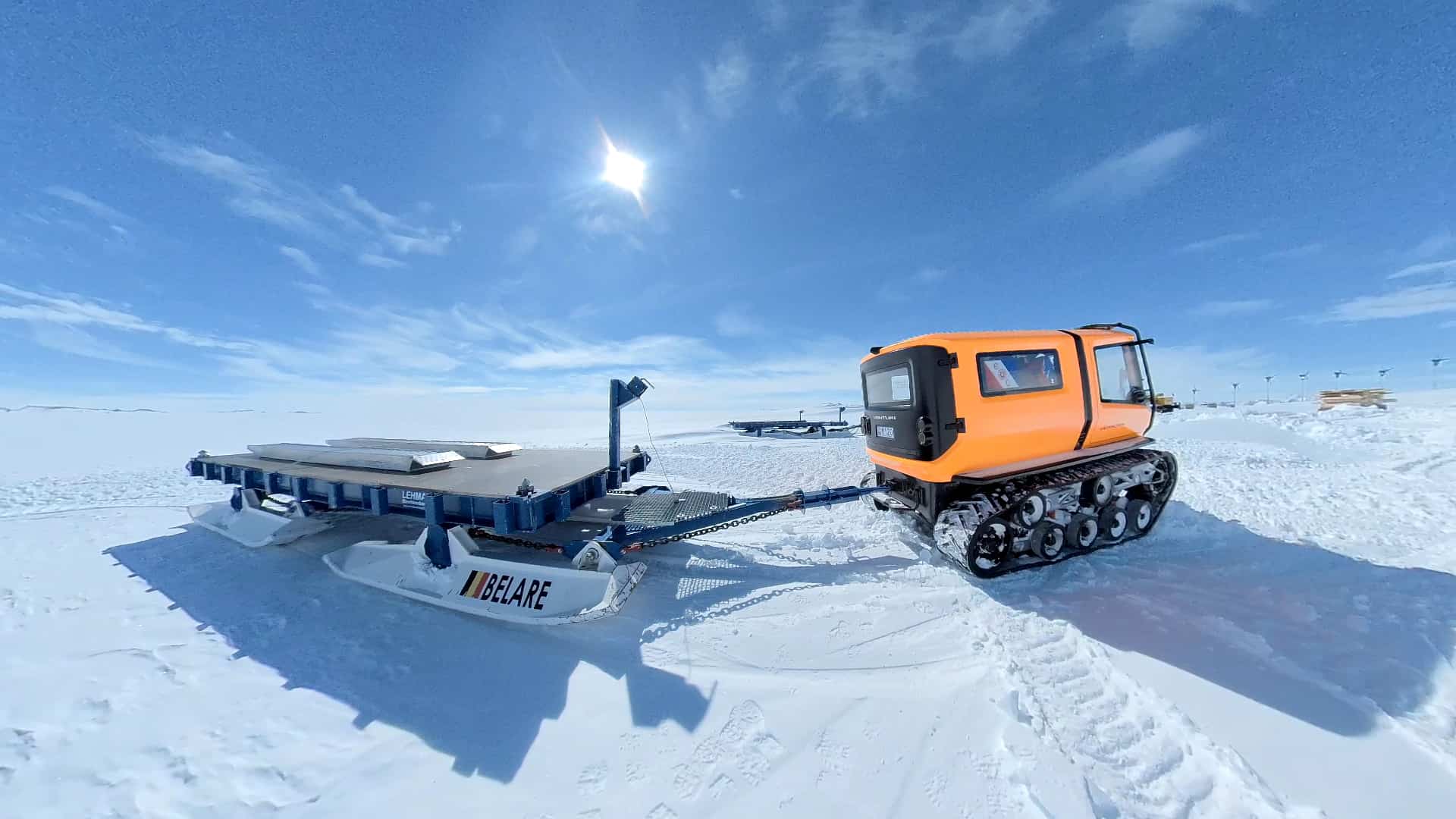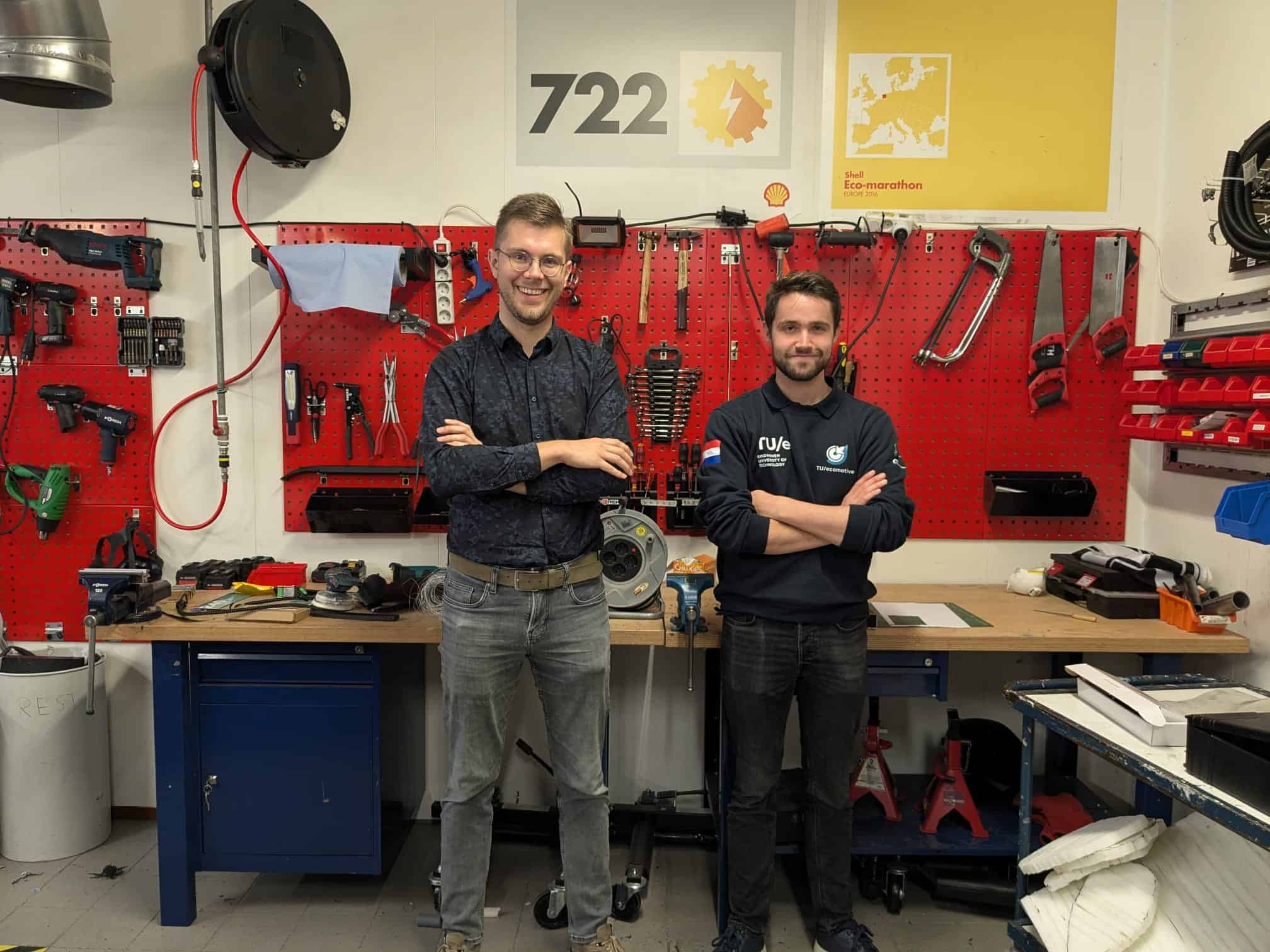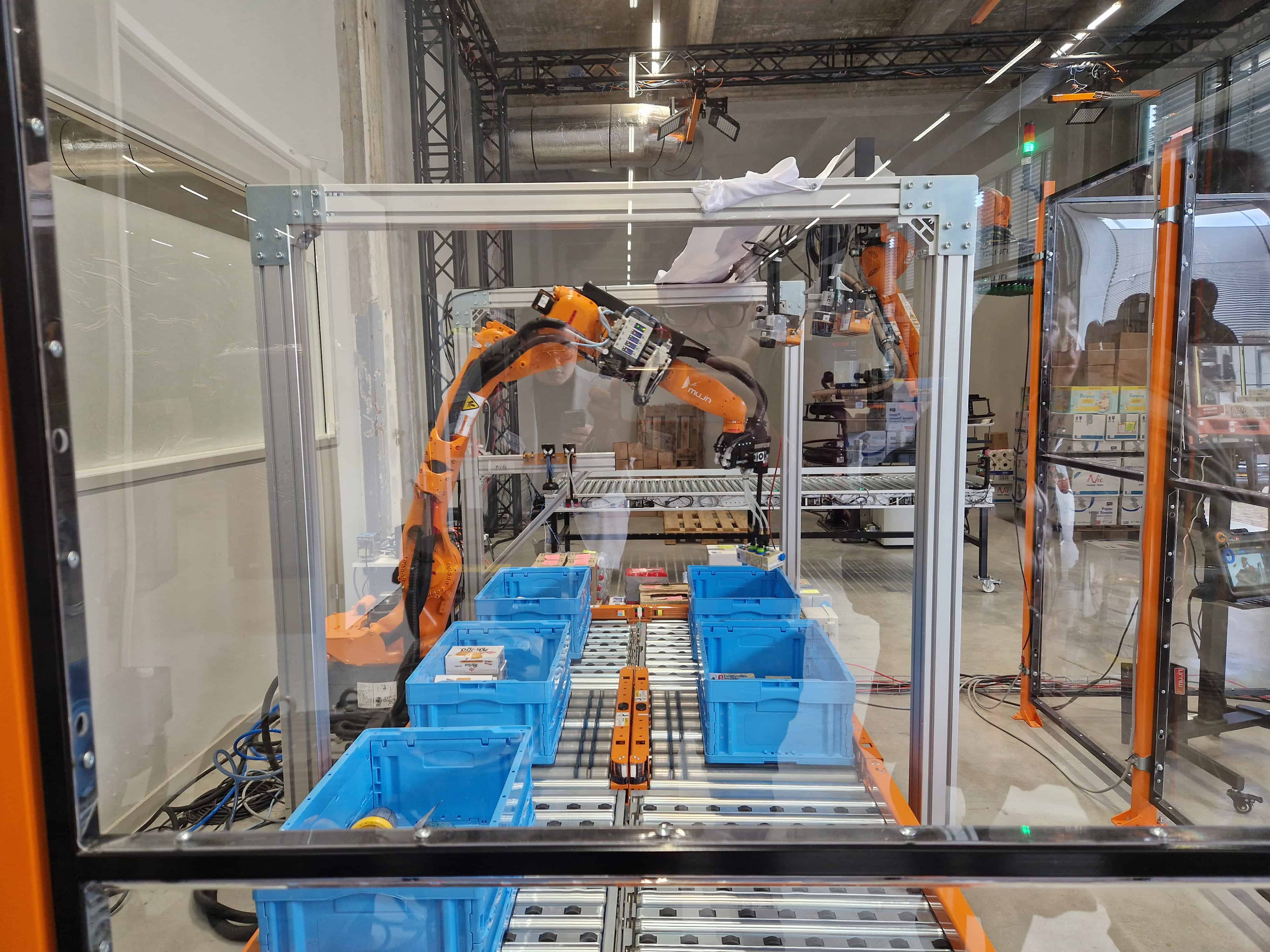
He can talk about it for hours and hours. Laurenz Edelmann has been working around the clock for Team Polar for the past year. Of its own accord, of course. “I prefer to spend my time on Team Polar, which is why I have reduced my studies a bit,” says Edelmann, who is the team leader of the TU Eindhoven student team this year. Team Polar is developing a research robot that can still conduct research in the harsh conditions of the polar regions.
Working prototype
After several years of research, the team unveiled its first working prototype on January 20. Edelmann talks about a “Minimal Viable Product” (MVP), a term often used in the tech world for a prototype that can roughly do what it’s supposed to do. “But it’s important to mention that it’s definitely not ready for Antarctica,” says Edelmann.
What can it do? “Well, it works in snow, cold and uneven terrain,” explains Edelmann. He and his team extensively tested the robot, which they call “Ice Cube”, in Norway at the end of December. “It can drive about 10 kilometers through the snow on a single battery charge at a temperature of -10 degrees Celsius. Probably two to three times as long on more accessible surfaces. Snow is very difficult terrain,” Edelmann explains.
In total, Ice Cube can be active for four hours a day. It is then recharged in less than a day by the solar panels that clad the rover. “Especially in the summers of Antarctica, where it is light 24 hours a day, it is not a problem to charge within a day. We then follow a schedule where the robot does four hours of research and charges for the rest of the day,” says Edelmann.
Steering
Ice Cube can steer as well. This sounds quite logical, but with the steering method that Team Polar chose, it was anything but certain. “We went for a system without a steering column. We did this because we felt that normal handlebars are less suitable for these conditions. You would rather not drive your car through the snow,” says Edelmann. So Team Polar opted for a tank-like steering system. The wheels on each side can rotate in the opposite direction of each other.
There were many researchers who were skeptical about the amount of engine power required for this type of steering. “We received reports from other scientists that this method of steering would be unsuitable due to the lack of power. Our own calculations indicated that it was possible. But it was still exciting during testing,” says Edelmann. In the end, it turned out that this way of steering works well.

Issues
There are also issues. In particular, the amount of ice that forms on the solar panels under cold conditions is a major problem. Edelmann explains: “If there is ice on the panel, the cell won’t work as well. A short circuit can also occur, causing the cell to self-destruct.”
A hydrophobic coating on the solar panels could be a solution. “With a hydrophobic coating, you give the panels a kind of raincoat, so to speak. Then ice cannot form on the panels. Unfortunately, such a coating does not work together with other coatings needed to make the panels work,” says Edelmann. That is why he and his team are now researching how they can make the two different coatings work together. “That would also be a breakthrough for all solar panels in the world,” says Edelmann.
Development and future
For further development of Ice Cube, it is important to focus on one research project. There are big differences in the research locations in Antarctica. Along the coast, there is often a strong wind and there are more slopes and cracks. “Such a crack is especially difficult when the rover is driving autonomously. It must then measure the crack and see if it can drive over it or around it. This takes a lot of time,” says Edelmann.
On the plateau, there are lower wind speeds and it is relatively flat. But that’s far from the research stations, which should intervene if something goes wrong. “Since circumstances are so different, the next step is to commit to a research goal. Of course, this decision is not taken lightly. We have to look at what feels best for us and what the rover is best suited for,” says Edelmann.
Although the composition of Team Polar changes constantly, the students do work towards one goal. In 2027, the Ice Cube is due to go to Antarctica. Edelmann believes that despite the changes in the team, this goal can be achieved. Edelmann says: “Testing in Svalbard is the next step. That should certainly be achieved within three years. Antarctica is a different story, both in terms of conditions and obtaining permission. But we will certainly succeed.”








